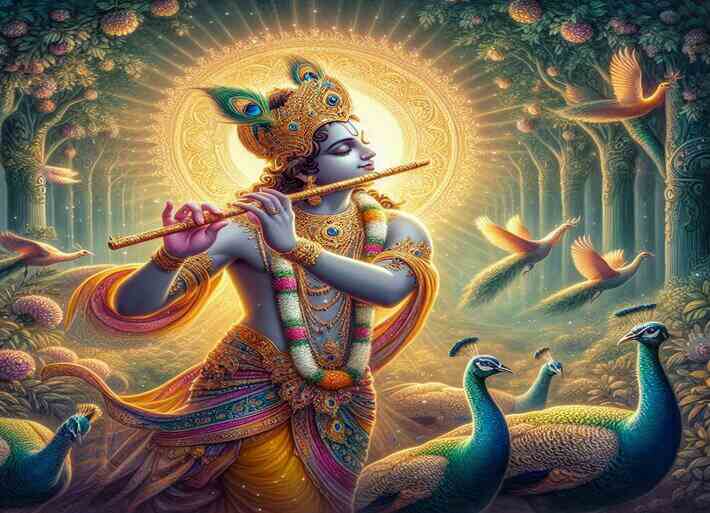Trigunas– Three Fundamental Traits of Nature

Ayurveda, an ancient Indian system of medicine, teaches that humans are intricately composed of Panch Mahabhutas (five elemental forces): Akasa (space or ether), Vayu (air), Tejas (fire), Ap (water), and Prithivi (earth). These elements shape our body’s organs and systems, while our five senses—ears, skin, eyes, tongue, and nose—enable us to perceive and absorb energy from the external world. This energy transforms into Tridoshas (three primary humors, or dosha)—Vata, Pitta, and Kapha—each formed from specific elemental combinations. These doshas, in turn, correspond to psychological qualities known as Trigunas: Sattva, Rajas, and Tamas, influencing our personalities and behaviors.
The concept of Gunas, rooted in ancient texts like the Atharva Veda and later explored in philosophical works such as the Bhagavad Gita, extends beyond humans to encompass all living beings and elements of the environment. Sattva embodies purity and clarity, Rajas signifies dynamism and passion, and Tamas represents darkness and inertia. These qualities manifest in mental processes and behaviors, shaping individual personalities based on the dominance of specific Gunas. From worship practices to dietary choices and daily routines, the interplay of Gunas influences every aspect of human life and character.
Sattva Guna
Sattva guna is all about having a spiritual vibe. When someone’s got a lot of sattva guna going on, they naturally want to do good and take care of others. Their mind and senses are steady, helping them figure out what’s right and wrong, and what actions are their duty to perform.
People with a dominant sattva guna see their work as something they’re meant to do. They approach tasks calmly, without second-guessing themselves. They’re also big on honoring divine and spiritual values, like respecting their teachers, being peaceful, avoiding harm to others, and focusing on inner peace through meditation and self-control. They’ve got a gentle, kind vibe and tend to keep quiet often.
But here’s the thing about sattva guna—it can tie people down by making them attached to feeling good and knowing stuff. And sometimes, being too good can also cause problems.
In short, a person with a sattvic personality is mentally strong, respects their teachers, avoids violence, shows kindness, stays quiet, controls themselves, and likes to meditate.
Rajas Guna
Rajas guna, or the quality of activity, is a fundamental aspect of personality in individuals. People with a dominant rajas nature tend to be driven by passion and desire, which often translates into a strong inclination towards activity and work. They are characterized by a sense of enthusiasm and interest in various pursuits, constantly seeking out new experiences and challenges.
However, this active quality can also lead to restlessness and a never-ending desire for more. Individuals with a rajas-dominant personality may find themselves easily consumed by greed, constantly craving for rewards and recognition for their actions. This intense focus on self-interest can sometimes cloud their judgment, leading to a skewed perception of right and wrong.
Moreover, those with a rajasic nature often struggle with detachment and letting go. They become deeply attached to their desires and ambitions, finding it difficult to abandon them even when necessary.
Overall, enthusiasm, interest, and a drive towards activity are hallmark traits of individuals influenced by the rajas guna.
Tamas Guna
Tamas guna is like a label for a person’s “material quality.” It’s tied to hopes and illusions, leading to traits like ambiguity, idleness, fantasy, and persistence. People with a dominant tamasic guna tend to be cautious, apprehensive, and may seek revenge. They often feel disillusioned and cynical.
For those with a tamasic nature, happiness is fleeting, often rooted in self-deception. On the upside, they’re willing to put in hard work. However, they easily become attached to possessions and exhibit self-centered tendencies.
Ayurveda sorts people into seven personality types based on their dominant gunas. The Trigunas serve as the building blocks of existence, kept in balance by nature. When this balance falters, the interplay of gunas can disrupt the universe’s evolution.
Key characteristics of a Tamas personality include cautiousness, apprehension, a tendency for revenge, hard work, and materialism.
Trigunas in the Bhagavad Gita
Chapter 13 of the Bhagavad Gita revealed that our existence is due to ignorance, which creates a false identity called the jeeva, tied to the three gunas of Prakriti. To help us break free, Shri Krishna introduced teachings in Chapter 14, highlighting its fruit as liberation. He explained how the universe stems from the combination of awareness and material aspects of Ishvara, with jeevas identifying with Prakriti, leading to the cycle of birth and death. Detailed analysis of Prakriti followed, showing how sattva, rajas, and tamas bind us through joy, action, and ignorance respectively. Our fate after death is determined by our mental state, with sattvic leading to knowledge, rajasic to material pursuits, and tamasic to lower births. Transcending the gunas involves detachment from Prakriti and devotion to Ishvara, leading to equanimity and liberation.

Shri Krishna emphasized that transcending the gunas requires detachment from Prakriti and devotion to Ishvara. Recognizing someone who has transcended involves observing their equanimity towards everything. Liberation comes through single-pointed devotion to Ishvara, who represents the unconditioned and pure essence. Such a liberated person sees the universe as gunas acting upon gunas and remains unaffected by them. Transcending the gunas in practice means maintaining equanimity towards objects, situations, and people at all times. This state is achieved through single-pointed devotion to Ishvara, the abode of nirguna brahman, the unconditioned and pure eternal essence, allowing detachment from Prakriti and attachment to Ishvara.





